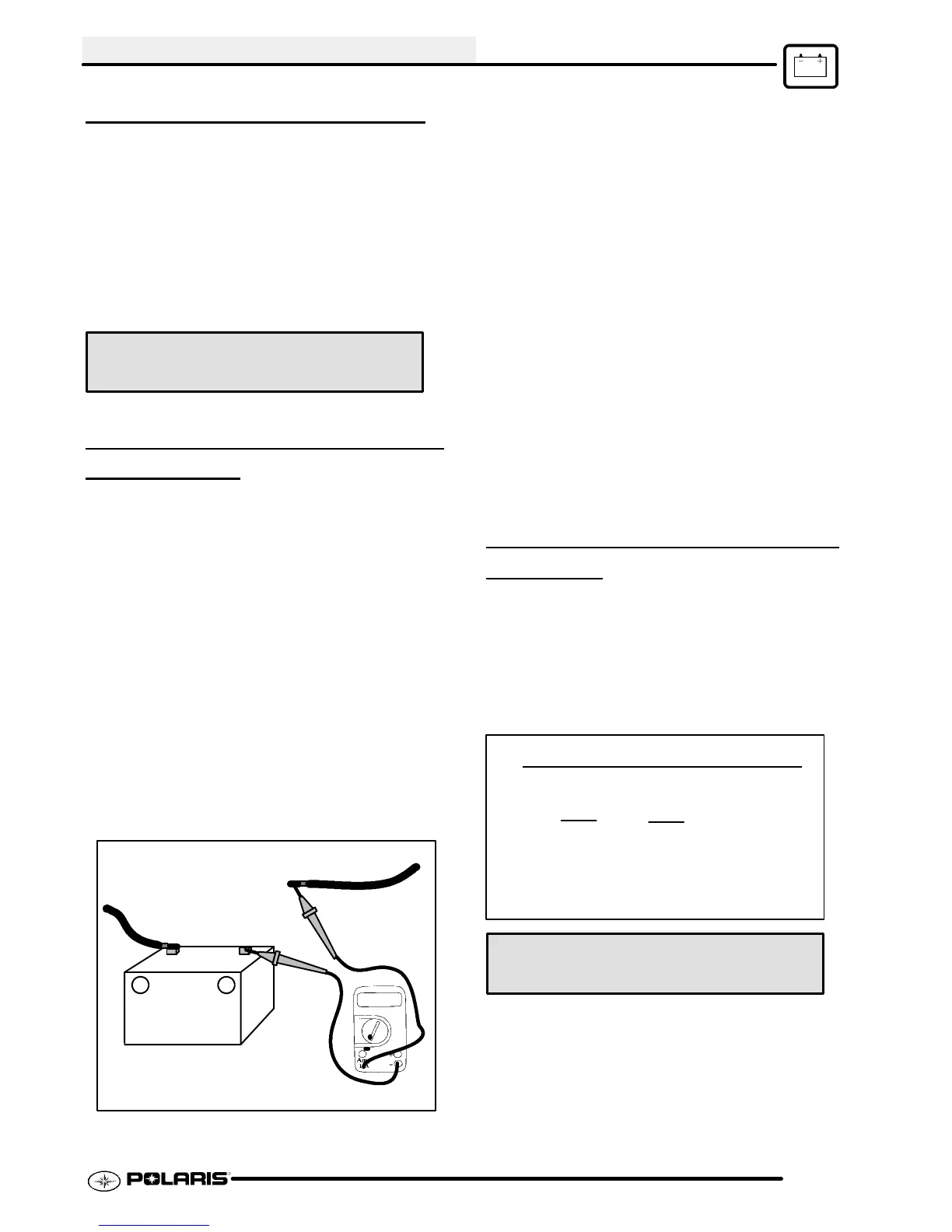ELECTRICAL
10.13
CURRENT DRAW - KEY OFF
CAUTION: Do not connect or disconnect the battery
cable or ammeter with the engine running. Damage
will occur to light bulbs and speed limiter .
Connect an ammeter in series with the negative
battery cable. Check for current draw with the key off.
If the draw is excessive, loads should be
disconnected from the system one by one until the
draw is eliminated. Check component wiring as well
as the component for partial shorts to ground to
eliminate the draw.
Current Draw - Key Off:
Maximum of .02 DCA (20 mA)
CHARGING SYSTEM “BREAK
EVEN”
TEST
CAUTION: Do not connect or disconnect the battery
cable or ammeter with the engine running.
CAUTION: Never use the electric starter with the
ammeter connected, as damage to the meter or meter
fuse may result. Do not run test for extended period
of time. Do not run test with high amperage
accessorie s.
The “break even” point of the charging system is the
point at which the alternator overcomes all system
loads (lights, etc.) and begins to charge the battery.
Depending on battery condition and system load, the
break even point may vary slightly. The battery should
be fully charged before performing this test.
GConnect an ammeter (set to DC amps)
in series between the negative
battery cable and terminal.
Do not use electric start.
--+
YB14A
Current Drain Inspection
Key Off
Less Than 9 mA
GConnect a tachometer according to
manufacturer’s instructions.
GWith engine off and the key and kill
switch in the ON position, the
ammeter should read negative amps
(battery discharge). Reverse meter
leads if a positive reading is
indicated.
GShift transmission into neutral. Start
engine with recoil only.
GIncrease engine RPM while observing
ammeter and tachometer.
GNote RPM at which the battery starts to
charge (ammeter indication is
positive).
GWith lights and other electrical load off,
this should occur at approximately
1500 RPM or lower .
GTurn the lights on and lock parking brake
to keep brake light on.
GRepeat test, observing ammeter and
tachometer. With lights on, charging
should occur at or below 2000 RPM.
ALTERNATOR OUTPUT TEST
(AC
AMP)
This test measures AC amperage from the alternator.
CAUTION: This test simulates a “full load” on the
alternator . Do not perform this test longer than required
to obtain a reading or the alternator stator windings may
overheat. Do not exceed idle rpm during this test.
To Calculate Available Alternator Output
150W
12V
=
12.5 Amps
I
=
P
E
I = Current in Amps
P = Power in W atts
E = Electromotive Force (V olts)
Alternator Current Output:
Minimum of 7 AC Amps
GMaximum alternator output will be
indicated on the meter. It is not
necessary to increase engine RPM
above idle.
GPlace the red lead on the tester in the
10A jack.

